






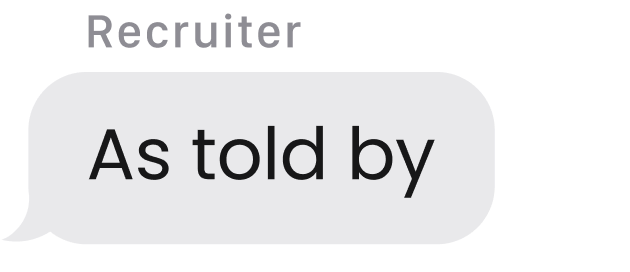









talent professionals have grown
accustomed to as they wait for
candidates to respond to their outreach.


 Things are more digitized than ever before, which means candidates are overwhelmed with outreach from digital channels
Things are more digitized than ever before, which means candidates are overwhelmed with outreach from digital channels
 It’s a candidate driven market, which means you’re probably not the only one reaching out to talent about an open position
It’s a candidate driven market, which means you’re probably not the only one reaching out to talent about an open position
 Some talent professionals are trying traditional methods of outreach and failing to separate themselves from the competition
Some talent professionals are trying traditional methods of outreach and failing to separate themselves from the competition









As recruiters and sourcers, communication is our primary goal.
We want to get someone's attention and have a conversation.
Even with 4.88 billion people using the Internet (along with 5.3 billion unique mobile users), communication has become incredibly challenging.
Heck, 'ghosting' has even become a term. Throw in a pandemic and somehow, we are in the most candidate driven market you may ever have known.




































What on earth happened?
If you have read The Robot-Proof Recruiter, you may recall that companies had all the control decades before.
- if it was the only job or one of a few hundred available at a company
- if they were the only applicant or one of a thousand
Job seekers would look for roles in a newspaper, and they wouldn't know:
You never left a job without another. Employer brand and EVP? They didn't exist. Companies ruled by carrot and a stick, and you were lucky to have a job.
People stayed, even when mistreated.
Fast forward to 2021,
and one quick search on the Internet will reveal thousands of job possibilities, salary expectations, and available reviews.
How a company treated its people was once opaque. Now, it's right there for people to see.


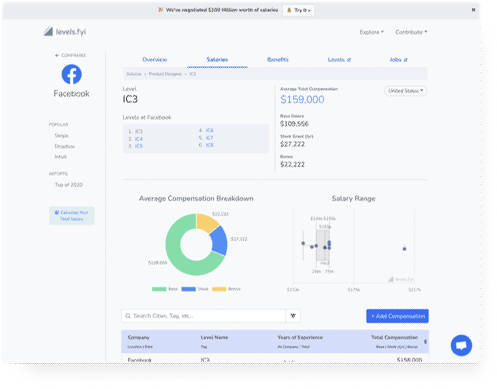















But the other problem is that people, especially those who have skills in demand, avoid recruiters.
Even the most hyper personalized InMail fall on deaf ears because people won't open their LinkedIn messages for fear of being confronted with piles of recruitment spam.

 Robert Bratton
Robert Bratton
Promotions Sr. Product Manager role - Hey! Are you looking

 Amelie Lens
Amelie Lens
Updates Bay Area Design [BAD] Recruiter at TEKsystems - Sometimes, the best way

 Ricky Ramirez
Ricky Ramirez
Updates Sr. Software Engineer, AWS - We are looking for a Senior

 Katie Jackson
Katie Jackson
Updates Account Executive for Enterprise SaaS - I stumbled across

 Anderson Gray
Anderson Gray
Updates Product Operations Manager, Growth - Hi Anush, I hope that

 Martin Ikin
Martin Ikin
Updates HIRING QUICK! Senior CX Manager role - Hi! I came across

 Kingsley Bolt
Kingsley Bolt
Updates Data Scientist, Applications - We are looking for a Data

My favorite Tweet to evidence this was one sent by @pjf in May 2016.
He shared the exquisite InMail he had received from Weston at Google. It's personalized and clearly shows that Weston had read Paul's profile. The Twittersphere was so impressed by this rare instance of relevant communication that it has been retweeted over 5500 times.
As it turns out, Paul tweeted it nearly 11 months after the InMail was sent –– which means it took him almost a year to open LinkedIn and see it.
Imagine if Weston had emailed him directly?










But today, even an email isn't enough to guarantee someone will engage.
The pandemic forced technology onto those who had been avoiding it and created confidence in those who used it rarely. Access to technology - right there in the palm of their hand - allows them the opportunity to investigate and decide.
Here's a tough pill to swallow for some: People don't owe you a reply. You need to deserve it. You need to look worthy of someone's valuable time (and so does your company). So ask yourself: How do you all fare under the scrutiny of an Internet search? And, most importantly, would you respond to you?
In this market, recruiters and sourcers need to get back to basics. Return to the lost art of human connection, which has been harmed by implementing the wrong kinds of automation and mass mailing. It's time to ramp up your human skills and use technology wisely to create ease, openness, and certainty, especially in this uncertain time.


When I started
my company,
Three Ears Media, I went
through a branding exercise.
Sounds easy enough, right?
As you might have guessed, there are so many nuances and inevitable differences when it comes to hiring from one company to the next, whether it's because of industry, the type of talent, or a million other variables.









After literally months of trying to focus on one universal problem, I came up with this:
Hiring Is Hard.
You must be thinking, No duh.
Thank you, Captain Obvious.
Yet, the reason that hiring is hard isn't as apparent as it might seem. When we hire, there are a million variables we don't control – including one of the most unpredictable variables in the world: Humans.
There's nothing we can control about their behavior, and we surely can't force them to take a job.
The one thing you
can control?
How you message people.
There are two messages that candidates conducting job research will look at:
Click on the icons to get info

Start with the subheading, the line that goes right above the bulleted list. Instead of something like "Qualifications and Requirements," create a list and then use the subheading to tell people why that list exists. For example, your bulleted list describes the ideal candidates. The subheading is not "Qualifications and Requirements." Instead, the subheading should say, "Here's what we're looking for in our ideal candidate."
By repositioning this list from something that feels a little more like a menu than a description of someone's life, you can create a connection through content. Offer insights into the job and describe how you define success.
It's not "3 years of experience."
It's "you've built a database that helps customers order items online."
The bulleted skill list should be specific to the work they've done in the past and be clear enough that every reader can say yes or no after reading it.
Warning: Don't use more than one third of bulleted content. Fewer women will apply to roles that are primarily bulleted lists.
Remember: Insider tips create intimacy. Think about it. If you walked into a workplace and asked for insider advice, wouldn't you instantly feel more connected to the person who offered it? This strategy can have the same impact.
Once a candidate sees your jobs - especially on LinkedIn - they will visit your LinkedIn profile.
You're not alone. I hear it every day in rewrite sessions where I sit down with people from every background to rewrite their LinkedIn profiles.
What recruiters are wondering is if this even matters to candidates. The truth is, yes. You're missing out on a free opportunity to make a memorable first impression with the right candidate without doing any work outside of that first LinkedIn update.





The content upgrades will help you build a network that's your very own exclusive pipeline of warm leads for great candidates.
Ideally, it should be close up to your face and show a smile. The reaction from the reader should be, "you look kind and helpful."
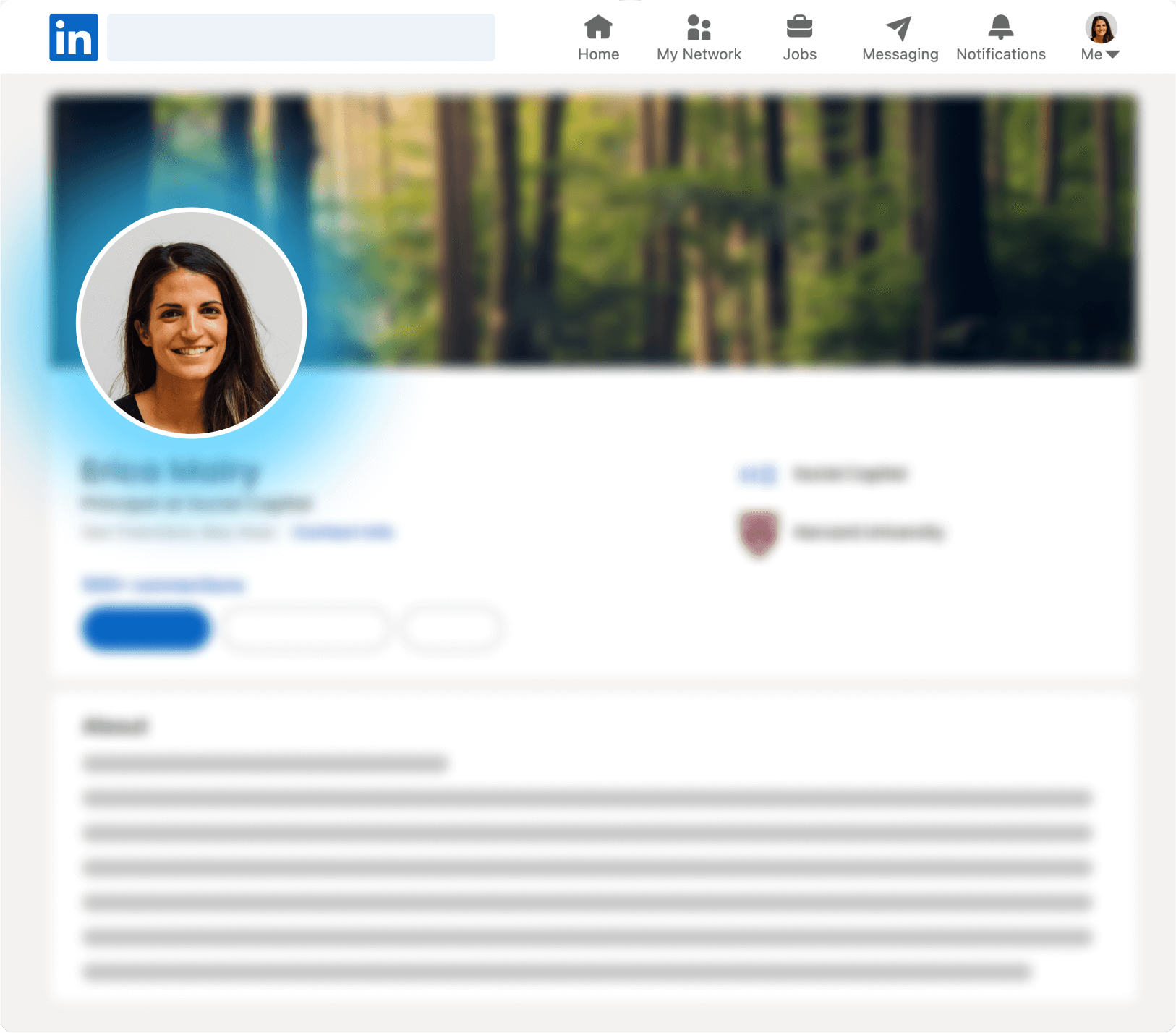
You need to confirm to the candidate that you are who you say you are.

If you're using your profile to recruit candidates (not look for a job), add a note to candidates.

"Hi there - if you found me after applying to a job here on LinkedIn,
nice to meet you! Here's what
happens next."
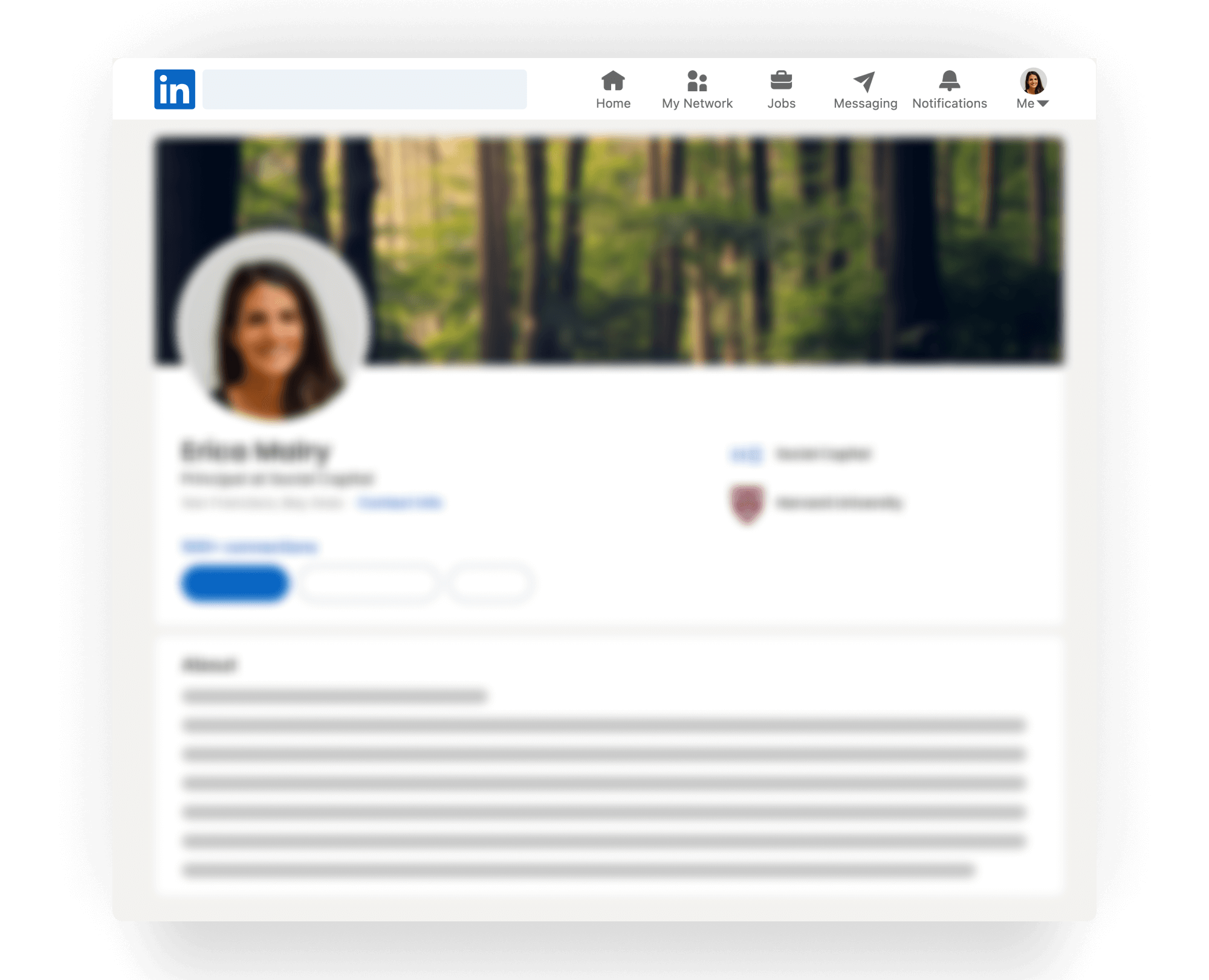







Unfortunately, too few recruiters are measuring their cold outreach response rate. Why?
But if we don't measure the response rate from passive talent, how do we know if we are doing a good job or not?
Seriously, sourcing the best candidates is only half of the job. The other half is being able to compose a brilliant outreach email that passive talent will respond to.
So how should we track our response rates?
With email automation tools that track open rates, reply rates, and sentiment stats, tracking candidate engagement is now easier and more accessible to everyone.
To borrow a marketing term, recruiters need to adopt a “Drip Marketing Campaign” approach when reaching out to passive talent.
I see too many recruiters sending long emails jam packed with so much information in their opening emails. Like many Drip Marketing Campaigns, we should be breaking this information into bite size chunks (think TL;DR) and sending it to our targeted candidates over a five email campaign.

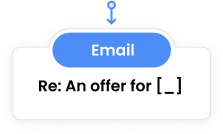
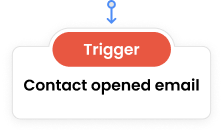






Those recruiters who have adopted this marketing mindset:
- build better relationships with their candidates over a more extended period
- send insightful snippets of information about the company and role
- try different tones and structures to see what emails best resonate with the candidates.
Adopting this Drip Marketing Campaign will also allow you to measure which of your outreach emails delivers the highest response rate. For me, my third email (which is just a meme) always provides the best response rate.

Before I even start sourcing on a new role,
I always set up my outreach email campaigns in advance. This way, I get to sit down and pre plan which hooks I can add to each email.
- Email cadence: How many emails I am going to send – between 4 and 6 works best for me
- Timing: Which time of the day will be best to send my emails (i.e. Financial Managers generally tend to start work earlier in the day than Software Engineers)
Once you have the candidate's attention, it will be much easier to maintain their attention throughout the whole interview process.

Continuing with the theme of TL;DR
Here are some quick tricks to measuring your candidate's engagement success:



From Silence to Successful Engagement
On behalf of Katrina Collier, Katrina Kibben, Vanessa Raath, and the hireEZ team, we'd like to thank you for taking the time to read through our insights on the state of Candidate Engagement.
We look forward to you revisiting the opening line of the ebook (“Can you hear that?”) soon and responding with “Yes, because candidates are finally responding back.”
If you'd like to learn more about supporting technology for the practices and strategies highlighted above, our team would love to speak with you!


